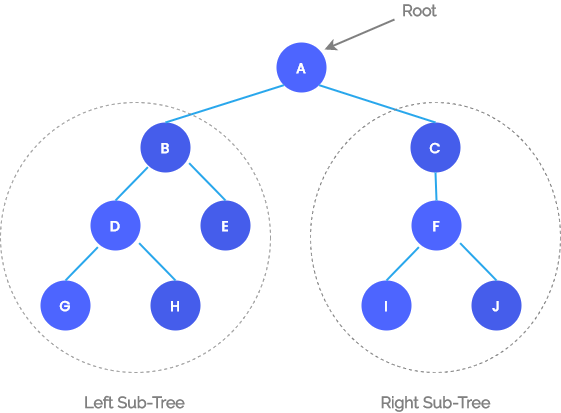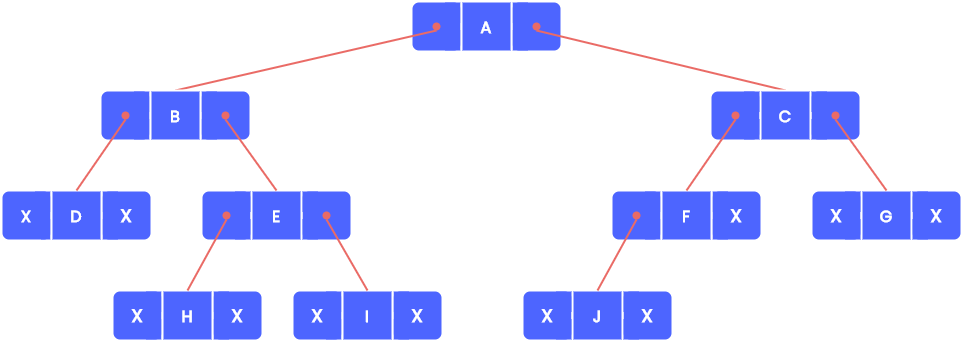A Binary tree is a special tree where each node can have no more than two children. A non-empty binary tree consist of the following:
- A node called the root node.
- A left sub-tree.
- A right sub-tree.
Both the sub-trees are themselves binary trees.

Types of Binary Trees
Complete Binary Tree
The tree T is said to be complete if,
- All it’s levels, except possibly the last, must be completely filled.
- All the leaf nodes must appear as far left as possible.

Full Binary Tree
A full binary tree is a special type of tree in which the leaf nodes will have zero children and other non-leaf nodes will have exactly 2 children.

Representation of Binary Tree
Binary trees can be maintained in memory using either an array or a linked list.
Sequential representation of binary trees
The simplest technique for representing a binary tree is to store the elements using a one-dimensional array.
Suppose we are using a one-dimensional array TREE to store the elements of a tree. The rules for a sequential binary tree are as follows:
- The root of the tree will be stored in TREE[0].
- If an element is stored in TREE[K], then
- It’s left child is stored in TREE[2K + 1].
- It’s right child is stored in TREE[2K + 2].
A tree of height h will require an array of maximum size 2h-1. A tree is empty if TREE[0] = NULL.
The following figure shows a binary tree and its corresponding sequential representation.


This method is inefficient unless the tree is (almost) full. Also, it is not possible to add a new node if the tree is already full.
Linked representation of binary trees
Every node in a linked representation of binary tree will contain three parts:
- The data element.
- A pointer to the left node.
- A pointer to the right node.
It can be represented by a structure.
struct node {
struct node *left;
int data;
struct node *right;
};
The root node is pointed by a pointer ROOT. The tree is empty if ROOT = NULL
The schematic diagram of the linked representation of the binary tree is shown below.

Applications of Binary Tree
- For rapid and easy access to data.
- Routing algorithms.
- To implement heap data structure.
- Syntax tree, Binary Search Tree, Hash Trees, Treap, T-tree, etc.
